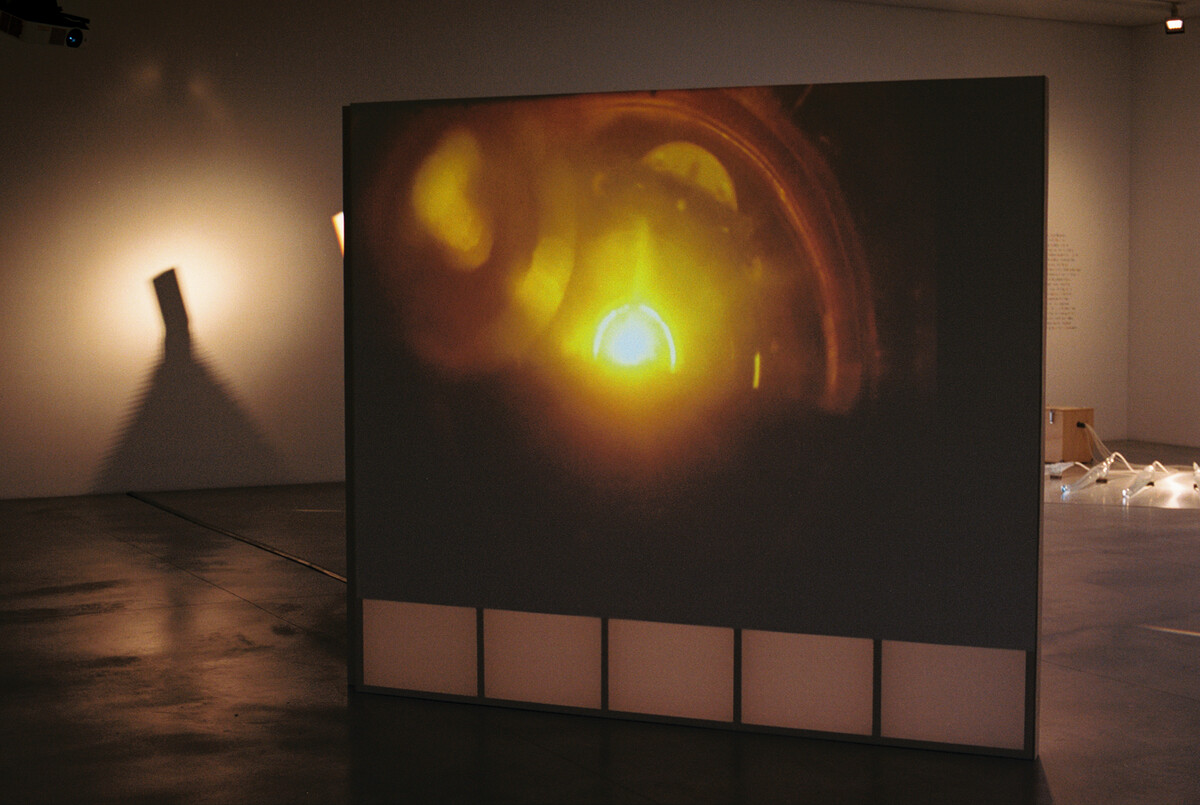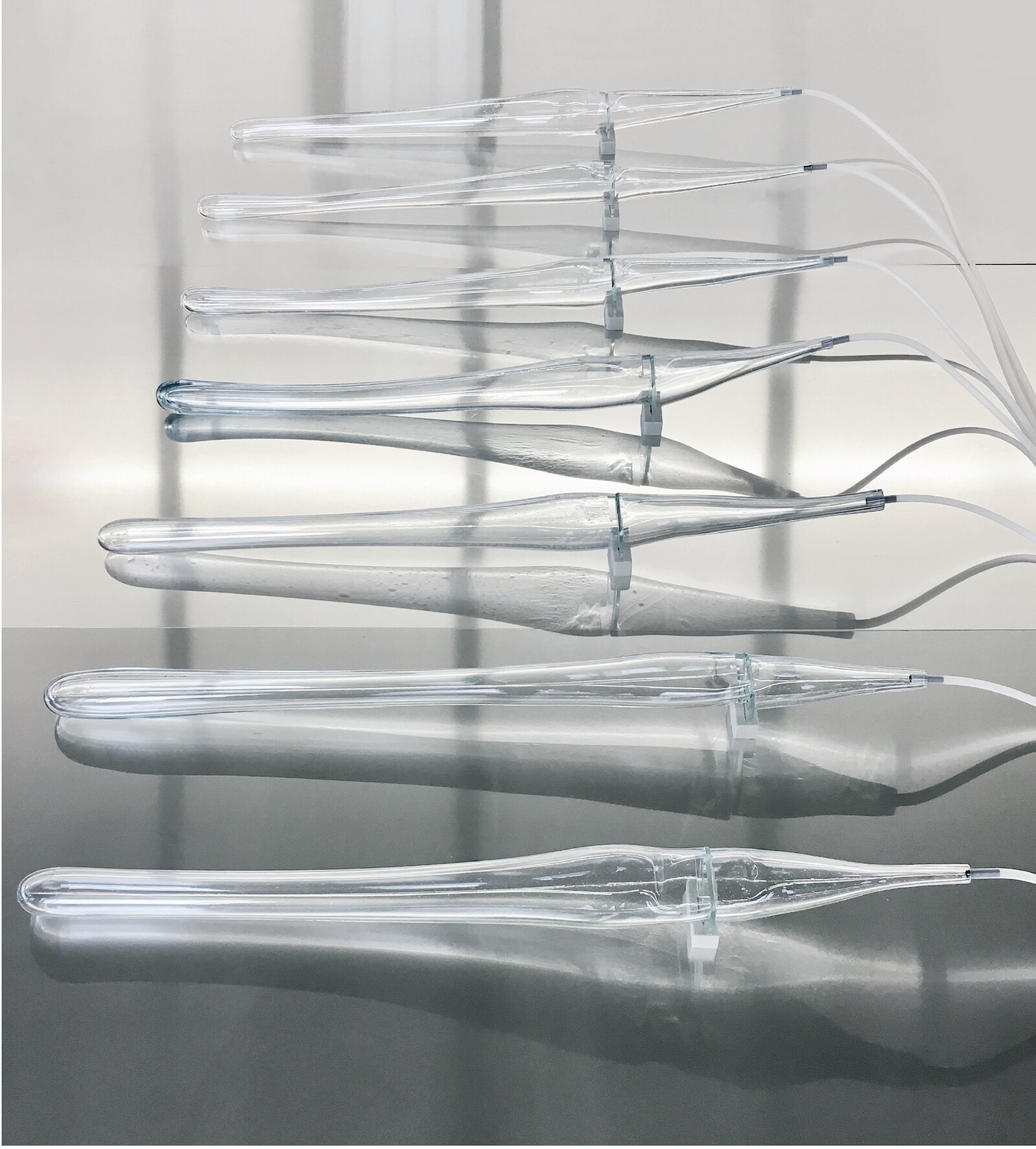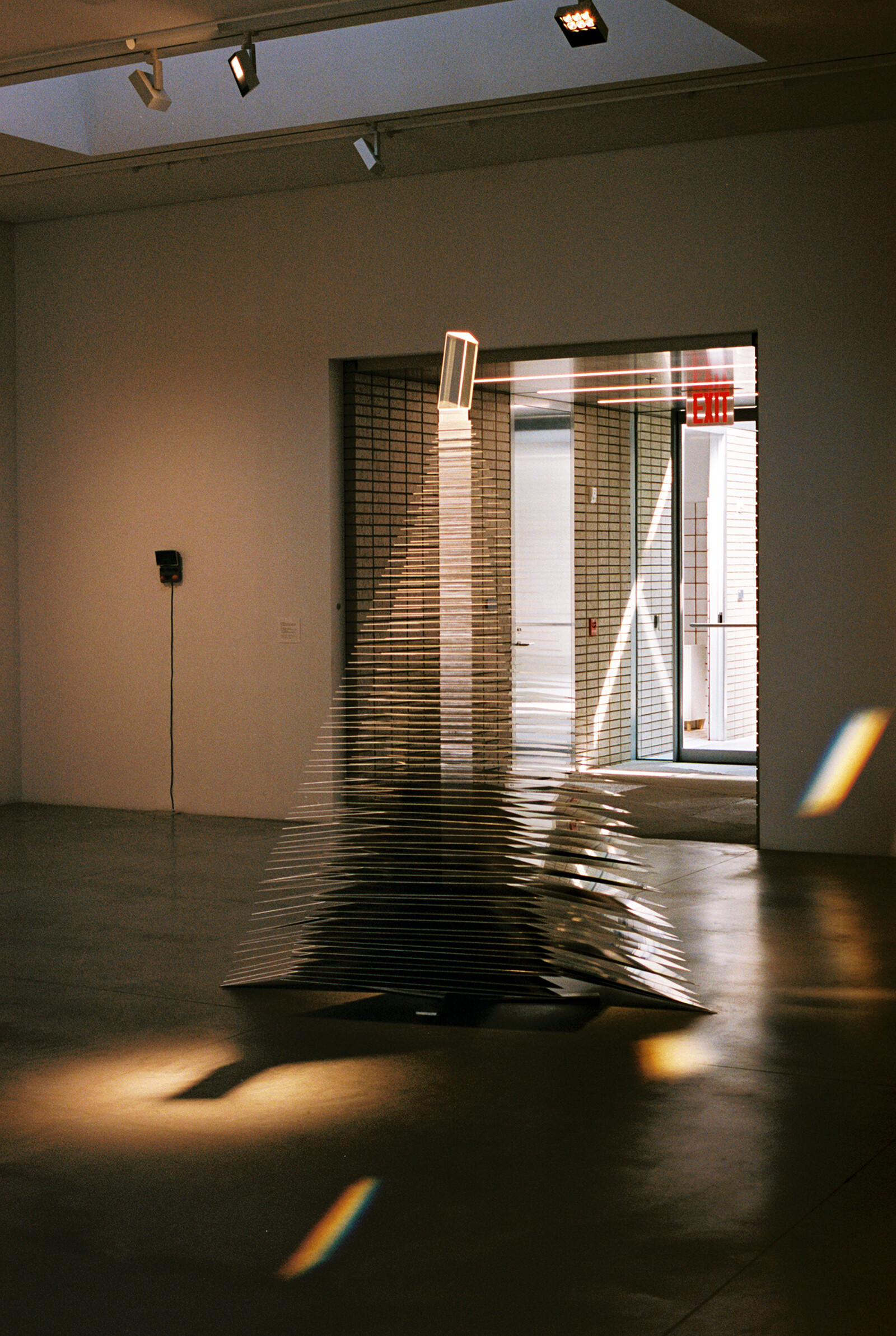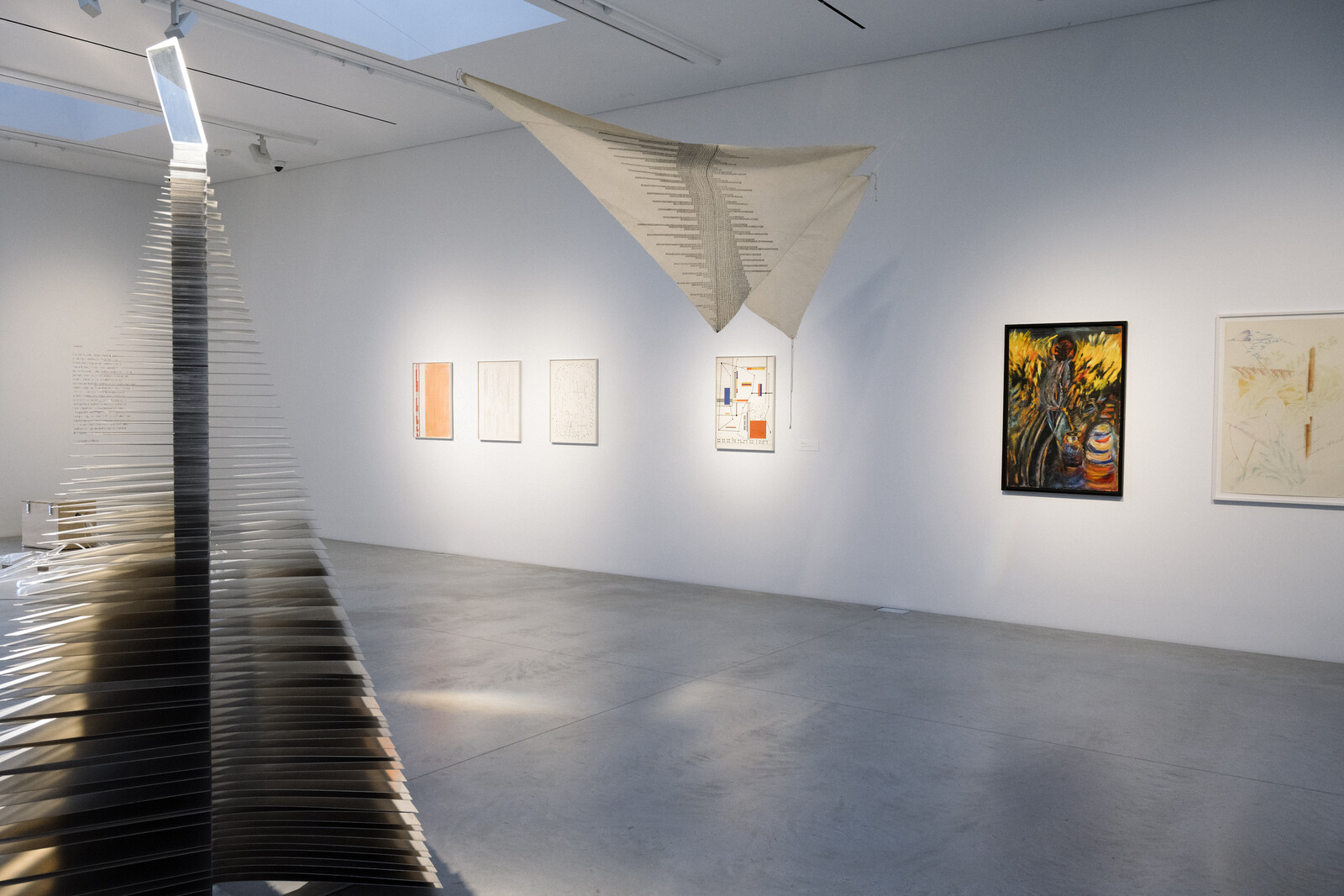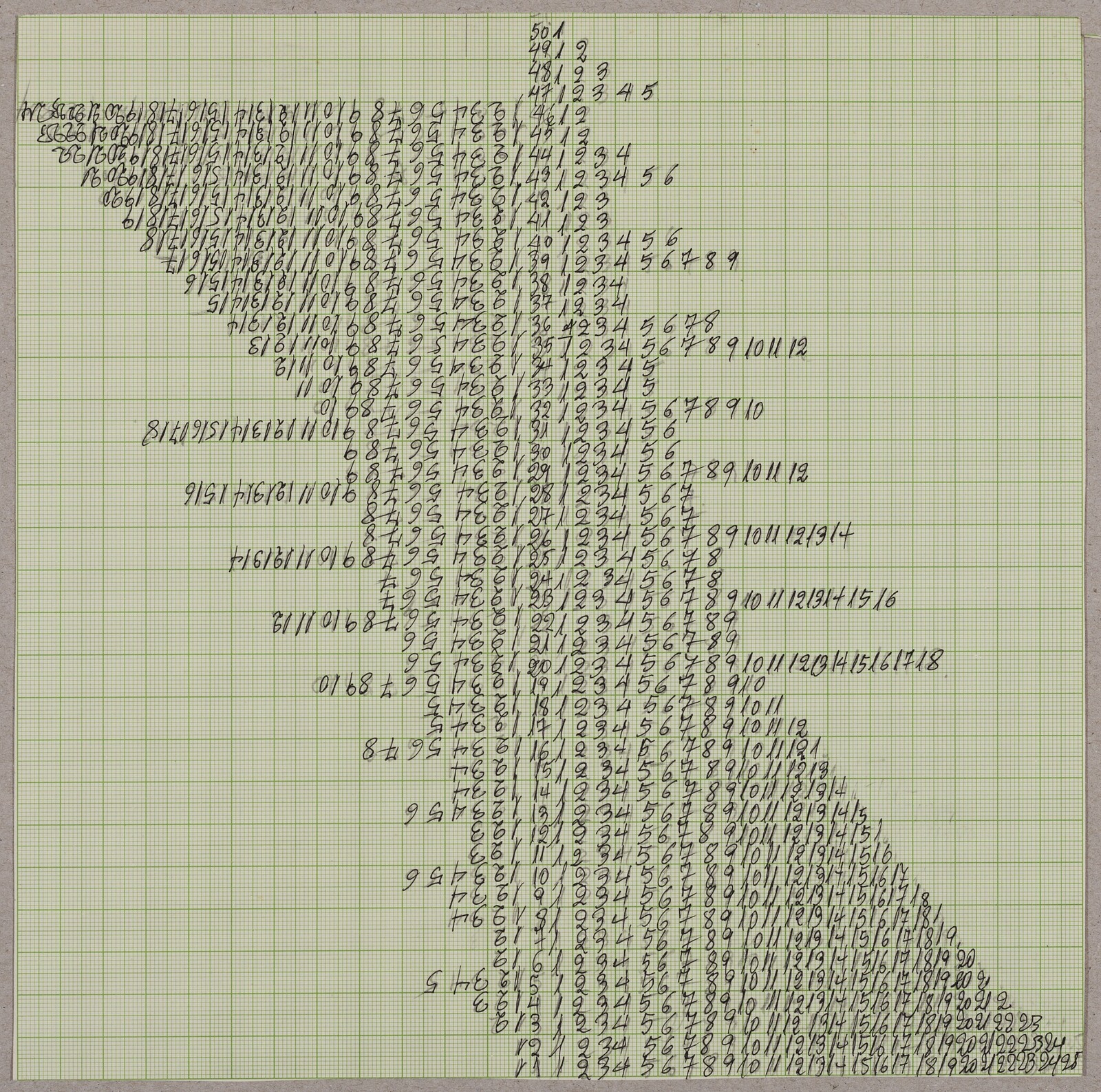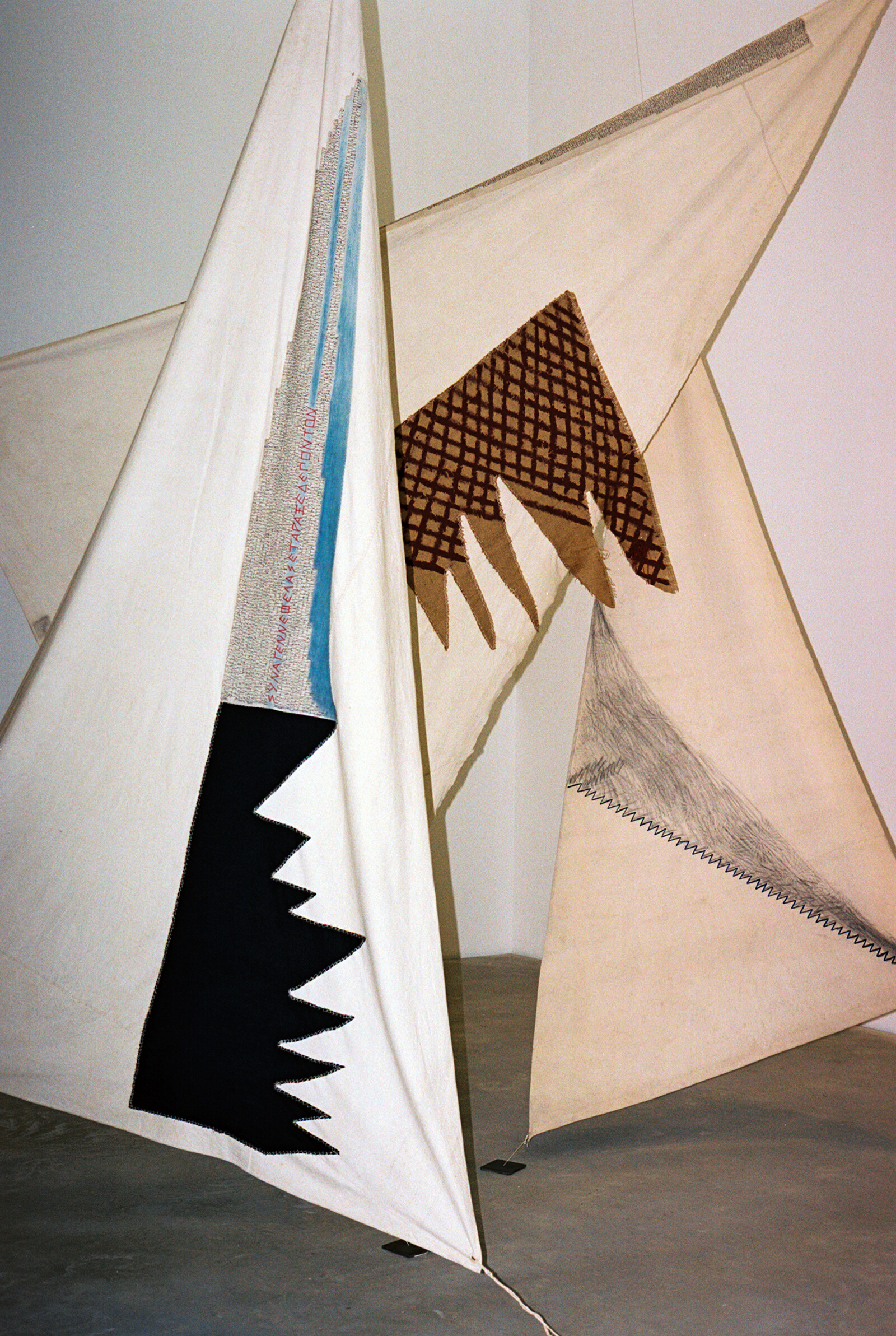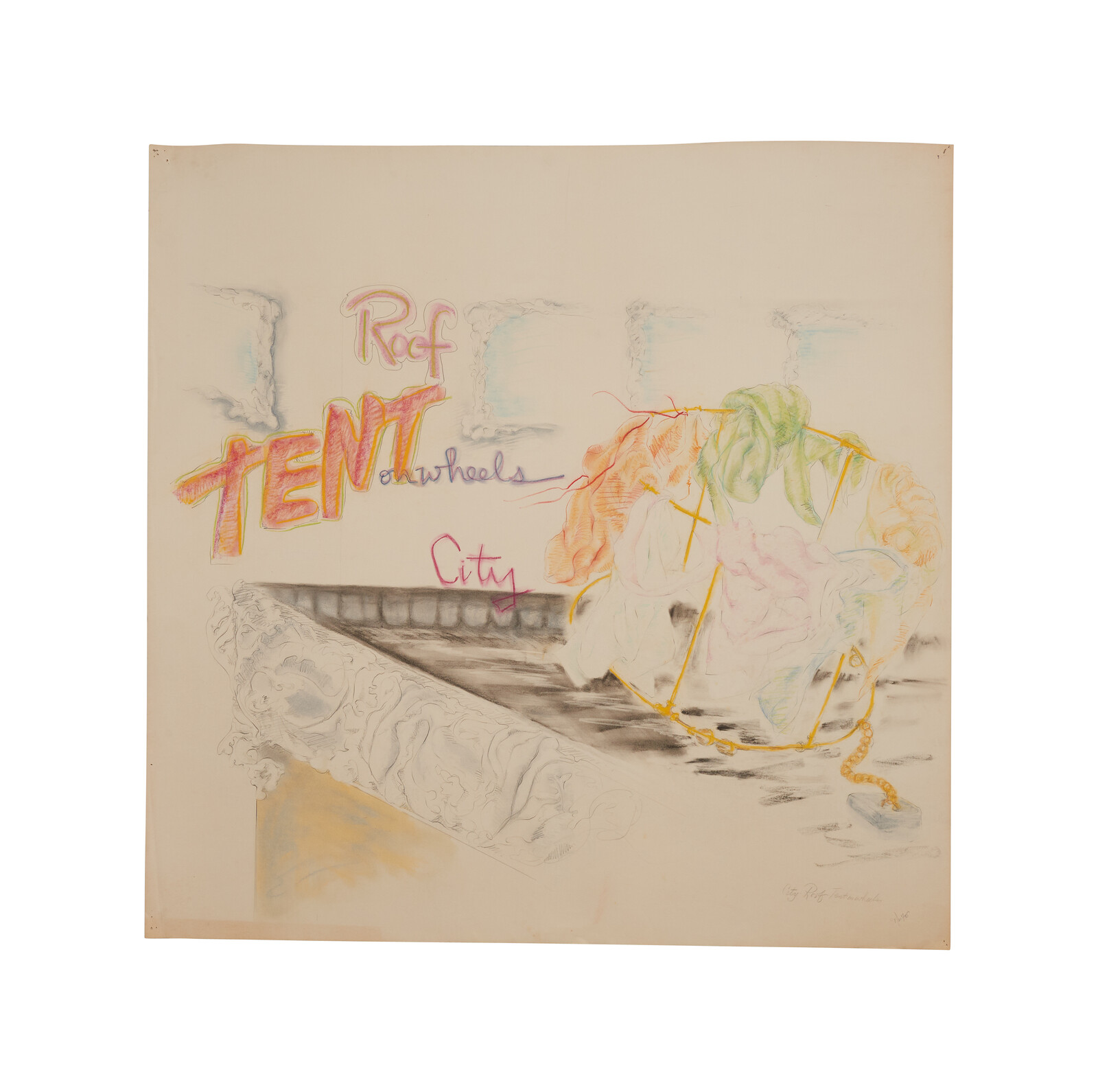Curator Quinn Latimer takes the mythological sirens of the ancient world—“figured as women (part bird or part fish, but all witch)”—as the symbol uniting this group show of seventeen artists at Amant. Such a premise might evoke notions of the demonized, feminized voice: incantations, laughing, shrieks, or related sonic eruptions. Precedents in feminist theory include Silvia Federici’s writing on the etymology of gossip (once defined as a group of women friends); Gloria Anzaldúa’s exhortation that “wild tongues can’t be tamed, they can only be cut out”; and Anne Carson’s assertion that patriarchal culture, from antiquity onward, has enforced “an ideological association of female sound with monstrosity, disorder and death.”1 However, Latimer (a poet herself) positions the siren’s call as a type of technology that destabilizes binaries—gender and otherwise. The sound of the siren is one of knowledge, seduction, and death that crosses species, bumping against the limits of linguistic order.
The predominant sounds in “SIREN,” therefore, are nonsense and drones—an undoing of language into various states of nonhuman noise. Rather than creating a cacophony, these works are arranged airily throughout Amant’s three discrete spaces (two linked by a café and courtyard, and another across the street), their sound elements sometimes bleeding into one another, but more typically playing so quietly that visitors need to lean close to the works in order to hear them. Works foregrounding biology include Nour Mobarak’s Fugue I (2019), a tambourine-shaped sculpture of mushrooms and wood pellets containing speakers that play a voice-based sound piece, and Jenna Sutela’s moving-image works, which employ non-human organisms and computer algorithms as language-making entities. Sutela’s video nimiia cétiï (2018) uses a machine learning system to translate a “Martian language” transcribed by the nineteenth-century Swiss spiritualist Hélène Smith into speech and various scripts. She accompanies this sonic material with imagery of a bacteria colony hypothesized to be able to survive on Mars.
In the space opposite the courtyard, Katja Aufleger’s glass sculpture Sirens (Al Wakra Vol. III) (2019) emits warm, ambient tones. This set of seven organically shaped glass vessels, sonically activated by an air hose, were made from sand from a Qatari desert known for its singing dunes. At times it is virtually impossible to distinguish the sculpture’s sounds from the wails of emergency vehicles outside, or the alternations between speech and siren-like music in Aura Satz’s video Preemptive Listening (part 1: The Fork in the Road) (2018), installed across the gallery. Satz’s work is a meditation on alarm sounds, featuring Lebanese trumpet player Mazen Kerbaj, who plays a circular-breathing composition similar to a blaring emergency siren. As well as creating an acoustic environment in which sonic artworks can overlap, “SIREN” creates similar cadences through the duration of the exhibition. Its public program and publications, by artists and writers such as Anaïs Duplan, Lara Mimosa Montes, and Eileen Myles, began in June 2022 and will roll out until March 2023.
Other works delve into the poetics of layered and misrepresented language. Sky Hopinka presents several photographs layered with handwritten musings around their edges, as well as the video Fainting Spells (2018). A member of the Native American Ho-Chunk Nation, Hopinka honors the role of the Xąwįska (Indian Pipe Plant) that revives fainting people. Ticker-tape text describing human and plant perspectives is paired with images of landscapes run through a variety of hallucinatory visual effects.
It’s less clear how Dena Yago’s large folding-screen constructions, resembling the form of a graphic novel, fit into the logic of this exhibition. One piece includes cartoon imagery from Disney’s 101 Dalmatians (1961) overlaid with various cultural pronouncements, such as: “There is no criteria for obsolescence in culture. I will forever be subject to a next generation’s resurrecting me like a Lazarus in an ongoing form of temporal drag.” The sentence seems connected to Yago’s former role in the trend-forecasting collective K-HOLE. Meanwhile, New York–based art duo Shanzhai Lyric engage the materiality of consumer goods, with an installation of typo-ridden T-shirts-as-poetry, and a multichannel ambient sound work in the smaller 315 Maujer Street space activated by retail security tags. Shanzhai (a Chinese term meaning “counterfeit”) defines the operational logic of the group’s output, which upholds mistranslation as a form of linguistic possibility.
The use of banal materials was also a key motif of late-twentieth-century feminist art. In Senga Nengudi’s RSVP Reverie–Combat Fatigue (1977–2011), a sculptural installation of knotted, stuffed pantyhose, she pays homage to gendered and racialized “used bodies” that persevere through processes like childbirth, nursing, and mothering. Likewise, artist sisters Rosemary and Bernadette Mayer address the rituals of everyday life. Bernadette’s diaristic poems (from the 1970s through 1990s) muse on human-animal and intergenerational relations. Drawings by Rosemary (who died in 2014) expound on her study of ancient myths—a guiding factor in her 1970s sculptural works with draped fabric, as well as her ephemeral performances of the later 1970s and early ’80s known as “temporary monuments.” Several playful sketches plan out her Moon Tent ritual, staged at the home of art historian Robert Hobbs in upstate New York on a full moon in October, 1982, during which she wrapped the beams of Hobbs’s rooftop pavilion in gauzy glassine paper and staged an all-night party.
The exhibition draws significant attention to artists rarely shown in the United States: Bia Davou and Liliane Lijn. The late Greek artist Davou’s drawings recall the works of German Conceptualist Hanne Darboven, known for her compositions of inscrutable number combinations. Davou’s practice, however, melds abstraction with politicized concerns and emerging technology. Lijn, an American-born artist based in London, has worked in kinetic sculpture since the 1960s. She shows several “Woman of War” drawings from the 1980s (preparatory sketches for a monumental, moving public sculpture) and the metal installation Queen of Hearts, Queen of Diamonds (1980). This pyramid-shaped sculpture is made from thin, triangular sheets of stacked aluminum, topped with an optical glass prism. The effect is much like a massive house of cards that acts upon a set of inversions. Physically heavy, the slim metal panes appear nearly nonexistent from certain angles. Built from monochromatic, industrial materials, its prism throws pools of rainbow-colored light around the room. Completely static, it is activated through movement.
Such contradictions strike at the heart of “SIREN,” which alludes to a poetics as evanescent as it is embodied. Latimer firmly believes in the political import of poetry, which extends to the exhibition’s engagement with the relation of language to ecology. Instead of situating the siren call as a sound that is only perceptible by and exclusive to humans, Latimer posits a mode of listening that is metaphorical, contingent—and at the same time, often pleasurable.
See Silvia Federici, Witches, Witch-Hunting, and Women (Oakland, CA: PM Press, 2018); Gloria Anzaldúa, “How to Tame a Wild Tongue,” in Borderlands/La Frontera: The New Mestiza (San Francisco, CA: Aunt Lute Press, 1987); Anne Carson, “The Gender of Sound,” in Glass, Irony and God (New York: New Directions, 1995), 121.
